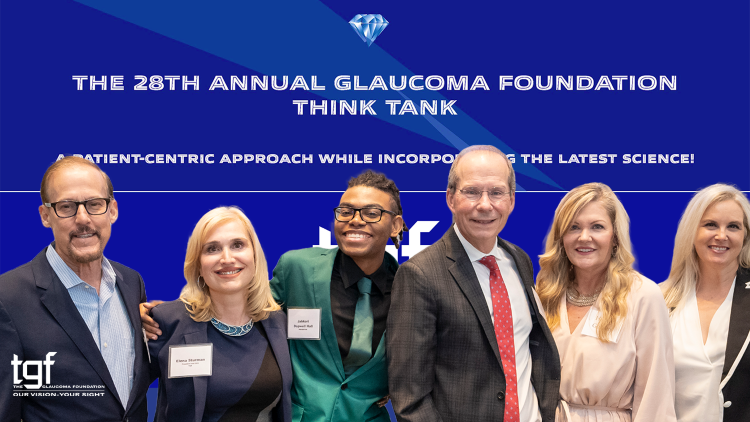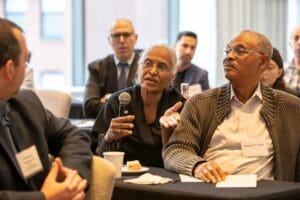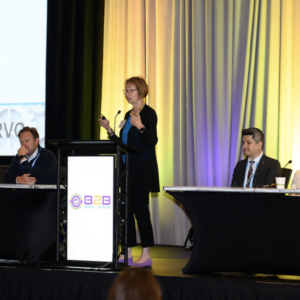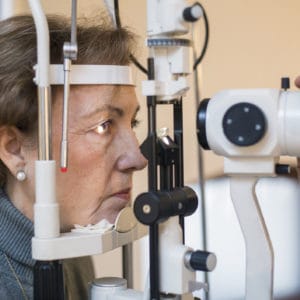August 23, 2023
The Glaucoma Foundation (TGF) is an organization with a mission to improve the lives of people with glaucoma. It encourages and funds glaucoma research, and it is a resource for patients, their families, clinicians, and researchers. TGF was formed almost 40 years ago by Robert Ritch, MD, and I have been on the board of directors for more than 30 of those years. TGF has always had an excellent relationship with optometry.
TGF has one major meeting per year with the Think Tank and an education event alternating year to year. The think tank was held this year following the education event in 2022 (watch the presentations here: The Future is Now: Translating New Information Into Clinical Practice). In June 2024, there will be a continuing education event that I will chair with Louis R. Pasquale, MD, FARVO, and Robert N. Weinreb, MD, on the program committee. This meeting hosts optometrists, ophthalmologists, and scientists and will be held in Manhattan.
The Think Tank brings together researchers and clinicians with the goal of stimulating discussion and new ideas as well as recruiting researchers to specific areas of glaucoma. The Think Tank does not offer continuing education credits and can be technical due to its scientific orientation. For many years, the Think Tank discussed neuroprotection and moved on to the many facets of exfoliative glaucoma. The meeting was held in June this year, was chaired by Dr. Pasquale, and I was on the program committee along with Dr. Weinreb. This year’s theme was, “A patient-centric approach while incorporating the latest science.” Dr. Pasquale did an amazing job developing the agenda and bringing together world-class experts. This was the finest meeting I have recently been involved with, though I should note that I did not attend the live event; I did watch it on Zoom, which you can too now at this link to Session 1 and subsequent sessions below.
Data Integration, Insulin Signaling, Neuroprotection
Each Think Tank session revolved around the patient, with the program’s strength being the expertise of the faculty as well as allowing sufficient time for a topic to be presented and discussed. The program was on Zoom with online participants also providing questions. The agenda started with the first session on data integration, which in part discussed genetics and the lessons learned. Sally Baxter, MD, (UCSD), Anthony Khawaja, MD, (United Kingdom Biobank), Stuart MacGregor, PhD, (QIMR Berghofer Medical Research Institute) and Dr. Pasquale presented.
Session 2 reviewed insulin signaling, metformin, and the new diabetic and weight loss drugs and their role in glaucoma.
Session 3 took a new look at neuroprotection with Derek S. Welsbie, MD, PhD, (UCSD), Dr. Weinreb, and Felipe Medeiros, MD, PhD, (Bascom Palmer Eye Institute) reviewing its status, asking why there was no neuroprotective agent, and how artificial intelligence (AI) may expedite a drug’s approval.
Session 4 on sex hormones is covered in greater detail below. (I had no idea of estrogen’s significant role in IOP and glaucoma.) Session 5 was on non-IOP factors such as diet and glaucoma’s impact on daily living. The concluding session was unusual in that it allowed glaucoma patients to speak, discussing what they would like to see in glaucoma research.
Impact of Estrogen and Race Examined
One of the surprises of the Think Tank was the women’s health session. The opening speaker told the story of Angelina Jolie, who at the age of 39 underwent the removal of her ovaries and fallopian tubes (oophorectomy) because of having the BRCA1 gene as well as a significant family history of ovarian and breast cancer. Ms. Jolie also had a preventative double mastectomy. While the surgeries reduced her risk of developing cancer, it increased her risk of developing glaucoma by 1.6 times.1 I was surprised to learn that women bear a larger burden with glaucoma as seen by higher rates of visual impairment and disparities in treatment.2 The Rotterdam study showed women undergoing early menopause had a 2.6-fold increased risk of glaucoma.3 The Nurses’ Health Study showed women undergoing later menopause reduced their risk by approximately half.4 The question of “Why?” appears to have several potential answers. Estrogen signaling regulates IOP as well as prevents glaucoma cell loss, as seen in animal models.5 Vajaranant and colleagues showed that women who underwent bilateral oophorectomy showed no increased risk of glaucoma overall, but women having the surgery before the age of 43 had an increased hazard ratio of 1.60.1 In this later group, estrogen therapy did not reduce the risk. Regarding hormonal replacement therapy, could this protect the optic nerve from degeneration? Estrogen therapy was associated with a small IOP-lowering effect (0.5mmHg), but the risk of glaucoma was reduced in African American women.6,7 Estrogen may regulate IOP by influencing aqueous production and outflow. It may produce these effects by favorably regulating smooth muscle tone through the nitric oxide synthase 3 pathway. Estrogen may also influence the perfusion of the optic nerve and retinal ganglion cells.
Hormone Therapy Linked to Lower IOP
Regarding use of oral contraceptives (OC), no direct association has been seen, though there was a trend between a longer duration of OC use and higher primary open-angle glaucoma (POAG) risk. 4,8,9 Regarding the question of hormone therapy (HT) and glaucoma, it may vary based on the type of HT and race.6 Estrogen-only use (but not estrogen + progesterone use) was associated with a 0.4% decreased risk of POAG per additional month of use based upon a claim-based database, while the Women’s Health Initiative suggests the risk of OAG is lower in Black women (but not in women, regardless of race) using estrogen-only.6,7 Most studies have found lower IOP with HT with a range of 0.1 to 3.8 mmHg reduction.8 The 2022 position statement from the North American Menopause Society lists open-angle glaucoma as one of the conditions women with premature or early menopause may be at risk for.10 The statement notes that estrogen therapy may reduce IOP and mitigate risk for open-angle glaucoma in Black women.9
TGF Think Tank was an excellent meeting and one worth each optometrist’s viewing, if just to look at a specific session. It delves into many areas that do not get the attention they deserve and yet are clinically important. As I mentioned in this column, women’s health is significant regarding glaucoma risk and has gotten little attention. And, TGF looks forward to inviting everyone to our 2024 education event.

References
1 Vajaranant TS, Grossardt BR, Maki PM, et al. Risk of glaucoma after early bilateral oophorectomy. Menopause: The journal of the north American menopause society. 2013; 21;4:391-98.
2 Vajaranant TS, Shuang W, Torres M, Varma R. The changing face of primary open-angle glaucoma in the United States: demographic and geographic changes from 2011 to 2050. Am J Ophthalmol 2012;154: 303–314.
3 Hulsman CAA, Westendorp IC, Ramrattan RS, Wolfs RC, et al. Is Open-Angle Glaucoma Associated with Early Menopause? The Rotterdam Study. Am J Epidemiology 2001.154:2, 138-144.
4 Pasquale LR, Kang JH. Female reproductive factors and primary open-angle glaucoma in the Nurses Health Study. Eye 2011;25, 633-41,
5 Youngblood HA, Parker E, Cai J, et al. Identification of estrogen signaling in a prioritization study of intraocular pressure-associated genes. Int J of Molecular Sciences 2021;22: 10288.
6 Vajaranant TS, Maki PM, Pasquale LR, et al. Effects of hormone therapy on intraocular pressure: The Women’s Health Initiative-Sight Exam Study. Am J Ophthalmol 2016; 165:115-124.
7 Vajaranant TS, Ray RM, Pasquale LR, et al. Racial differences in the effects of hormone therapy on incident open-angle glaucoma in a randomized trial. Am J Ophthalmol 2018; 195:110-120.
8 Madjedi KM, Stuart KV, Chua S YL, et al. The association of female reproductive factors with glaucoma and related traits. A systemic review. Ophthalmol Glaucoma;2022; 5:628-647.
9 NAMS Position Statement. The 2022 hormone therapy position statement of The North American Menopause Society. Menopause: The journal of the North American Menopause Society 2022. 29: 767-794.
Glaucoma Foundation photos by Ayano Hisa







